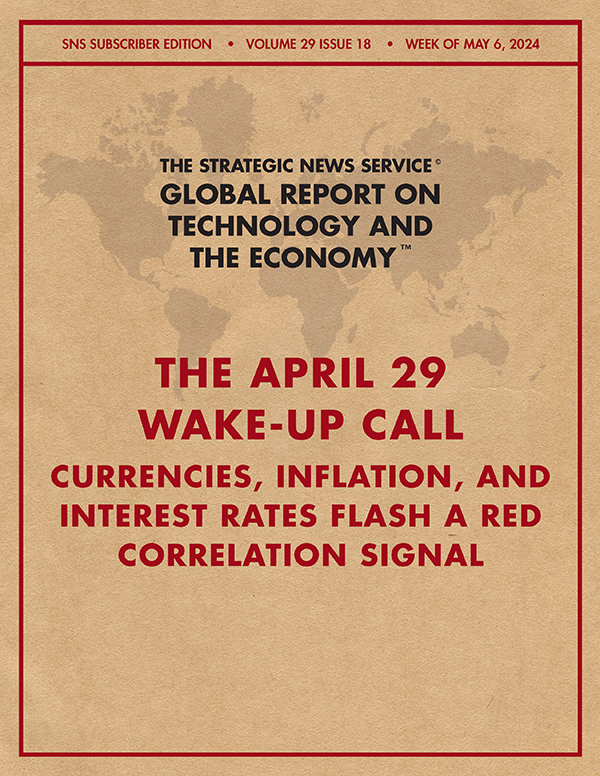
THE APRIL 29 WAKE-UP CALL Currencies, Inflation, and Interest Rates Flash a Red Correlation Signal By Mark Anderson
Why Read: Sometimes we get preoccupied by the symptoms and miss the disease entirely. This week, we look at the current health of the world economy for both new signals and a better understanding of what's coming next. ______ Most people don't study currencies unless they're planning an international vacation. This season, for example, Japan has become a favored place for Americans to visit, since their dollars buy more there than they have in a decade. But for those watching the global economy, currencies have a critical, if often overlooked, role to play in understanding both present and future outcomes. As an example, the yen/dollar ratio was a key indicator in enabling SNS to predict the 2007/2008 Global Financial Collapse, when literally no trained economists made this call correctly. In this week's issue, we'll look at the major movements in three leading indicator categories: currency exchange rates (world purchasing power), key commodity prices (inflation), and central bank interest rates. As most of our members know, the West (i.e., free-trade countries as defined by the World Trade Organization) has been fighting price inflation lately, generally raising interest rates to slow their countries' economies. But it's a delicate balance: raised rates generally lead to stronger currencies, as foreign direct investment is attracted to higher returns, and funds pouring in generally accelerate economic activity. On the other hand, trade balances go the other way, with exports favoring the countries of weakest currency - which is why China (and Japan) have manipulated their currencies for most of the last four decades.
|


